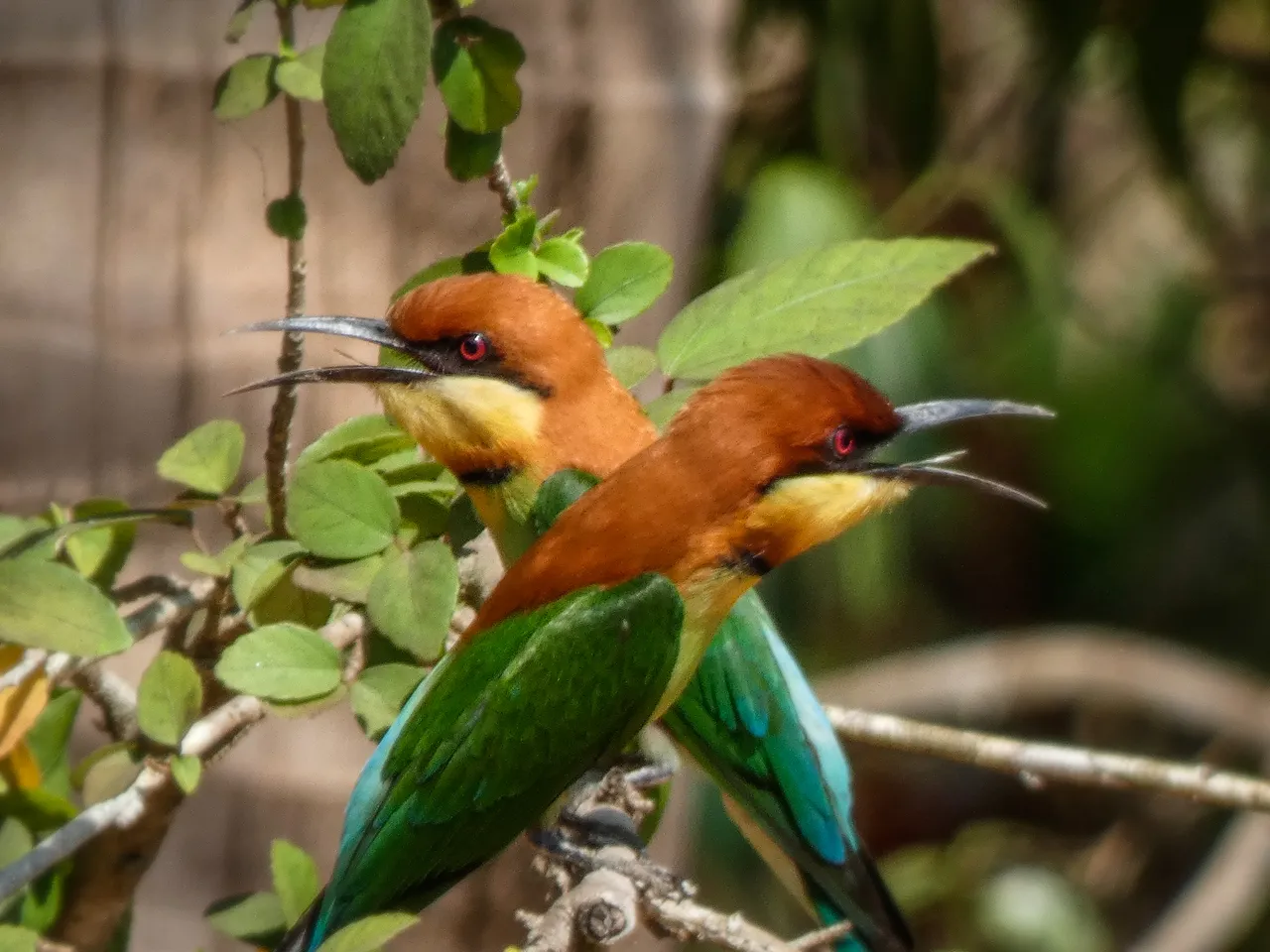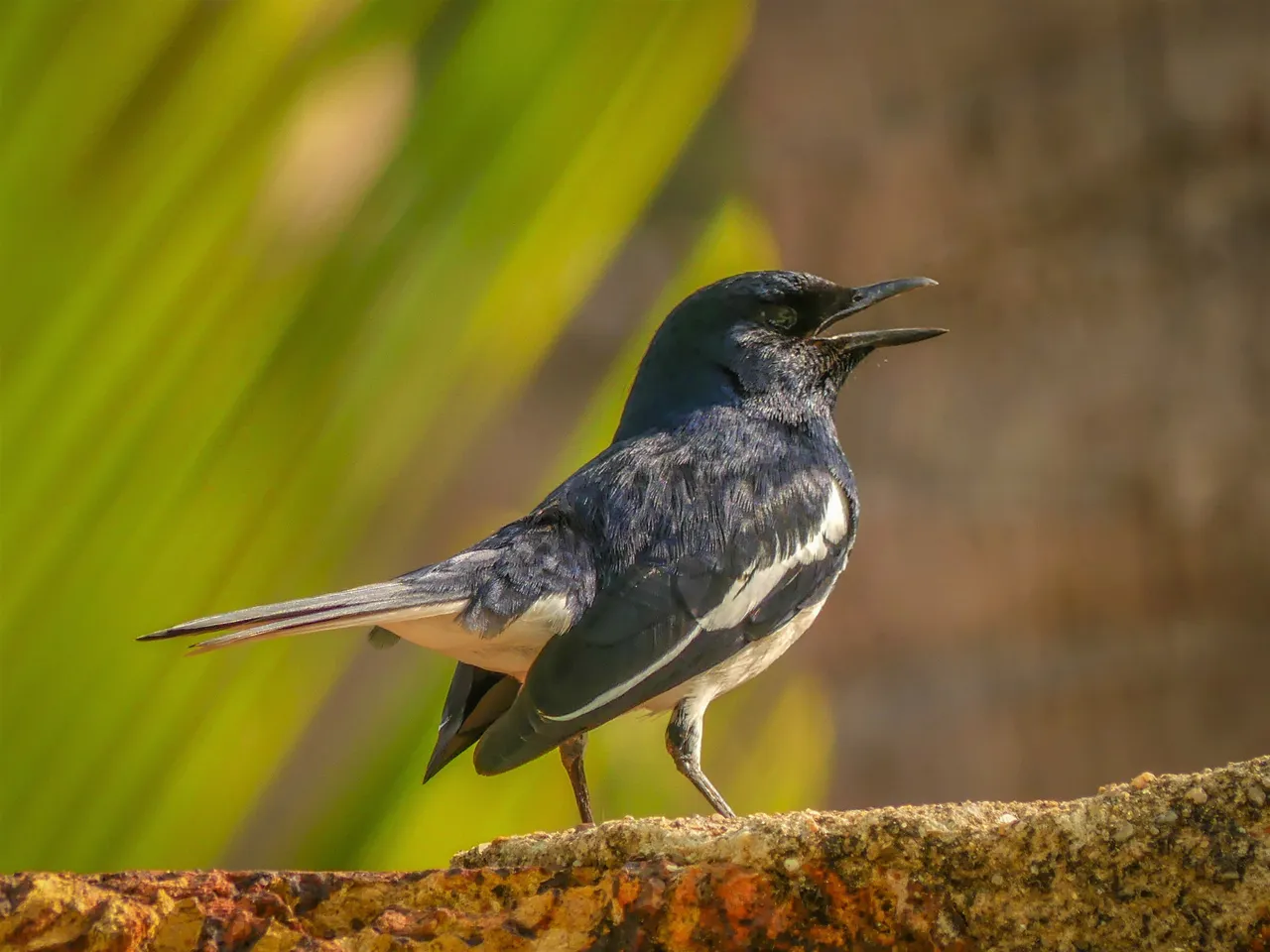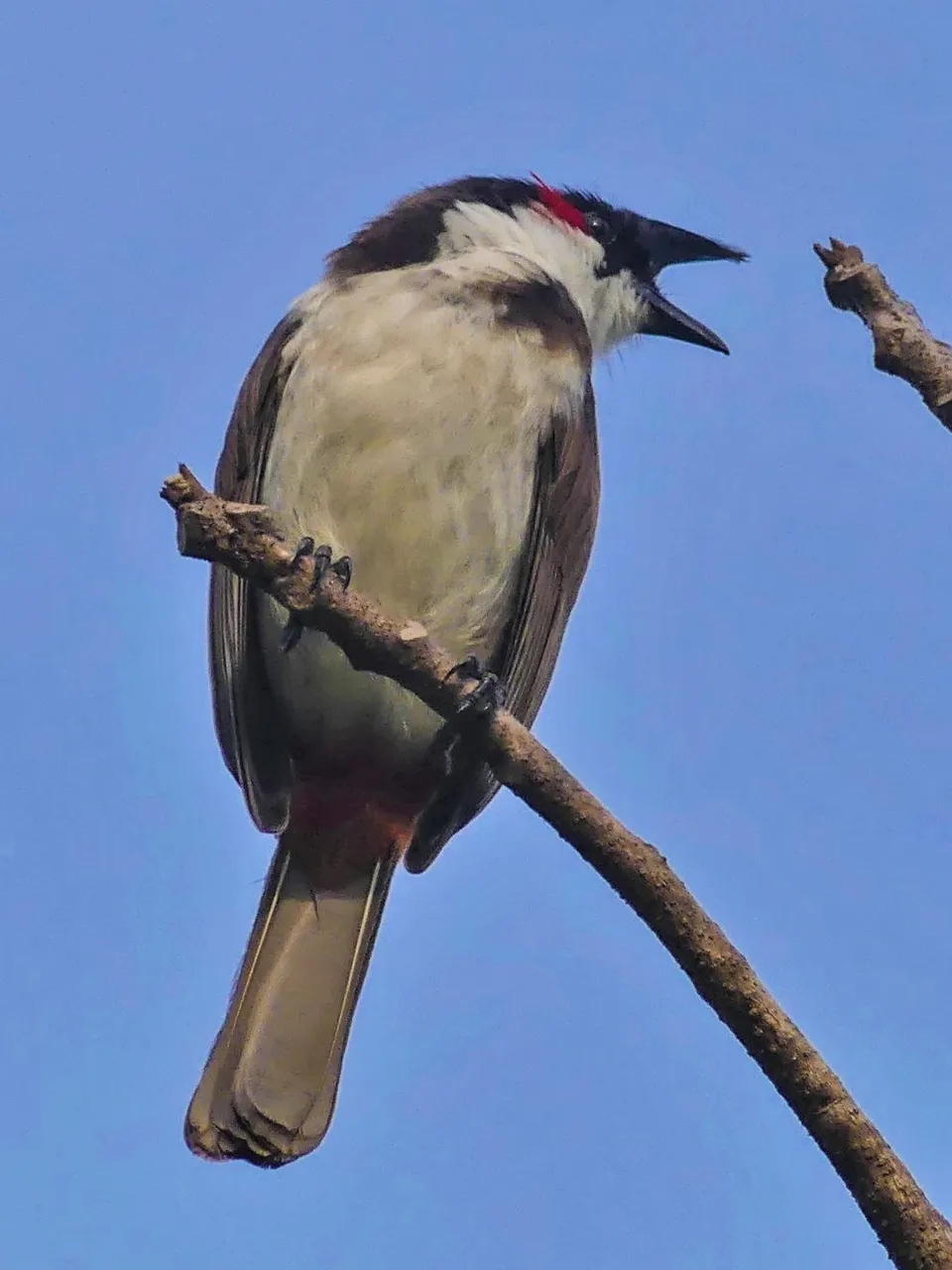
the male purple sunbird (Cinnyris asiaticus) is a tiny, dark yet iridescent bird. when in the direct sunshine it is a wonderful sight switching quickly between flashes of metallic green to blue to purple. here it is feeding on nectar from the wild giant milkweed (Calotropis gigantea) but it frequently takes nectar from our hibicus and firecracker plant (Russelia equisetiformis)

chestnut-headed bee-eaters (Merops leschenaulti) started nesting at our place three years ago after we moved some sand. we created a miniature cliff about one and a half meters high. several pairs of these bee-eaters tunnel deep into the sand cliff to nest. in earlier years they appeared in a flock in late winter. they are fascinating to watch in the evening as the flock gathers shoulder to shoulder into a tight cluster

before monsoon baya weavers (Ploceus philippinus) build their amazing hanging nests while swinging in the tall suru trees behind our house. when the monsoon starts that area floods and forms a small pond. the weavers feed on the plentiful frogs and insects. when the pond dries up after monsoon they leave the area and don't return until april when they again start weaving their intricate nests

the oriental magpie-robin (Copsychus saularis) is a most welcome resident songbird, far more sweetly melodic and varied than the previously mentioned birds. it's classic bluish-black and white coloration is unmistakable. it can be heard and seen daily on all sides of our house.

the red-whiskered bulbul (Pycnonotus jocosus) is another most welcome cheerful songbird that we see daily. a typical day starts pleasantly with them sitting in the amla tree right outside our bedroom window calling loudly and clearly 'pleased to meet you' 'pleased to meet you'! as we get up we frequently wonder how this small bird can make such a loud yet amiable sound. they build simple nests in visible and seemingly vulnerable places yet they obviously thrive. if they are not concerned then why should we be. maybe it is the stylish commanding pointed crest which keeps predators at bay.
